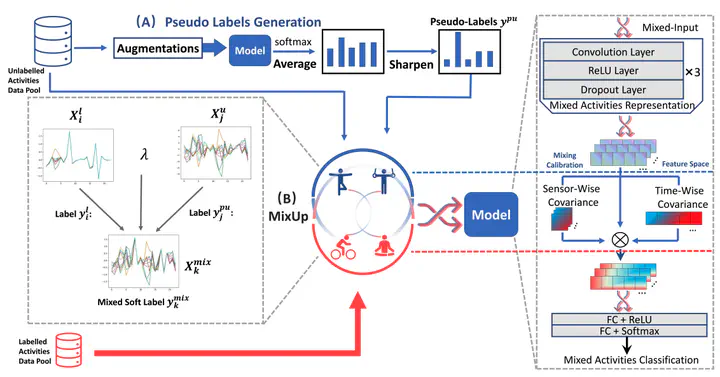 Image credit: Unsplash
Image credit: UnsplashAbstract
While traditional feature engineering for Human Activity Recognition (HAR) involves a trial-and-error process, deep learning has emerged as a preferred method for high-level representations of sensor-based human activities. However, most deep learning-based HAR requires a large amount of labelled data and extracting HAR features from unlabelled data for effective deep learning training remains challenging. We, therefore, introduce a deep semi-supervised HAR approach, MixHAR, which concurrently uses labelled and unlabelled activities. Our MixHAR employs a linear interpolation mechanism to blend labelled and unlabelled activities while addressing both inter- and intra-activity variability. A unique challenge identified is the activity-intrusion problem during mixing, for which we propose a mixing calibration mechanism to mitigate it in the feature embedding space. Additionally, we rigorously explored and evaluated the five conventional/popular deep semi-supervised technologies on HAR, acting as the benchmark of deep semi-supervised HAR. Our results demonstrate that MixHAR significantly improves performance, underscoring the potential of deep semi-supervised techniques in HAR.